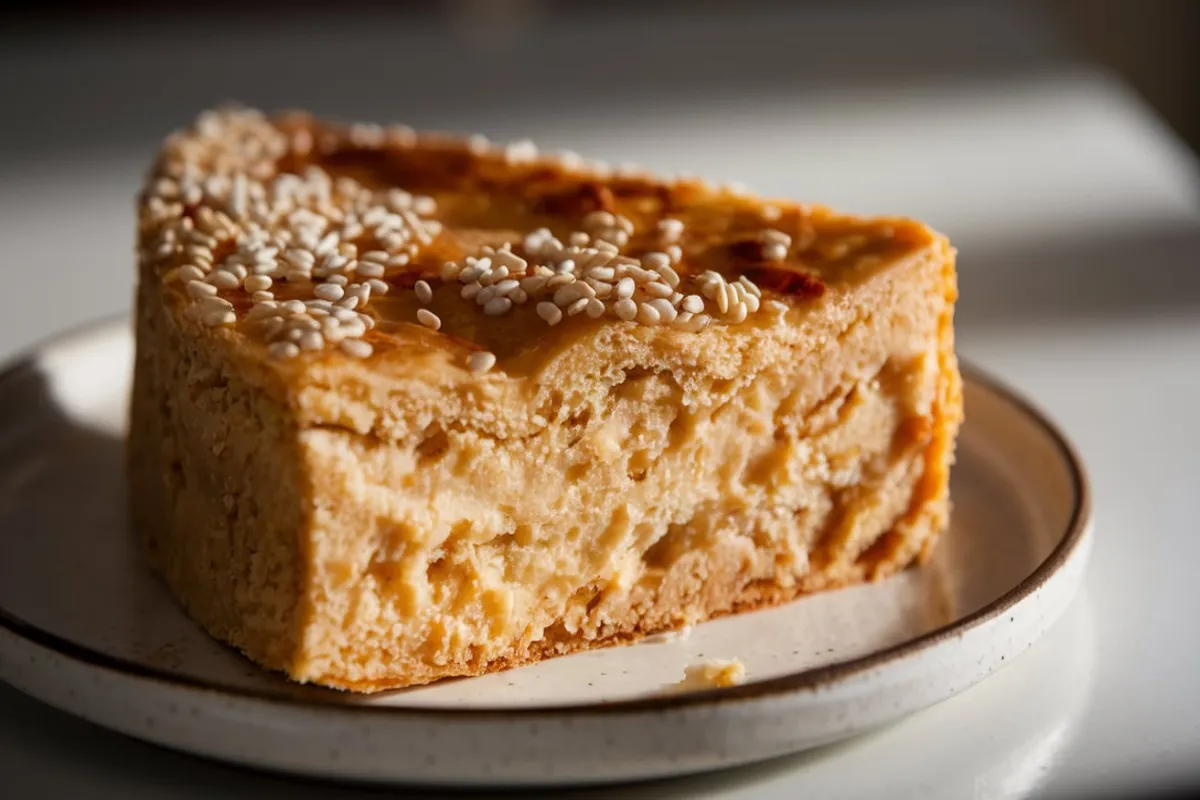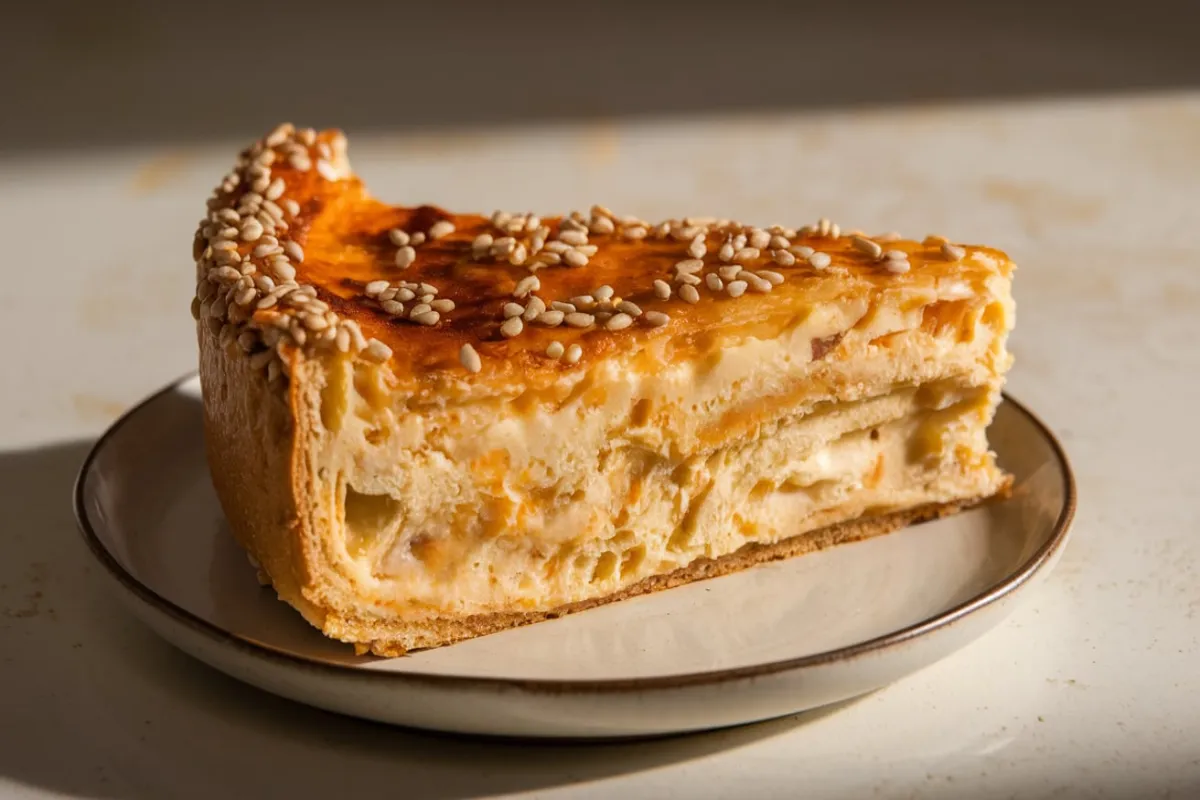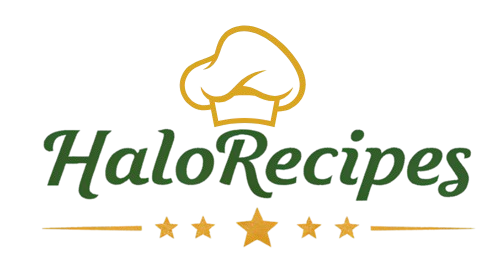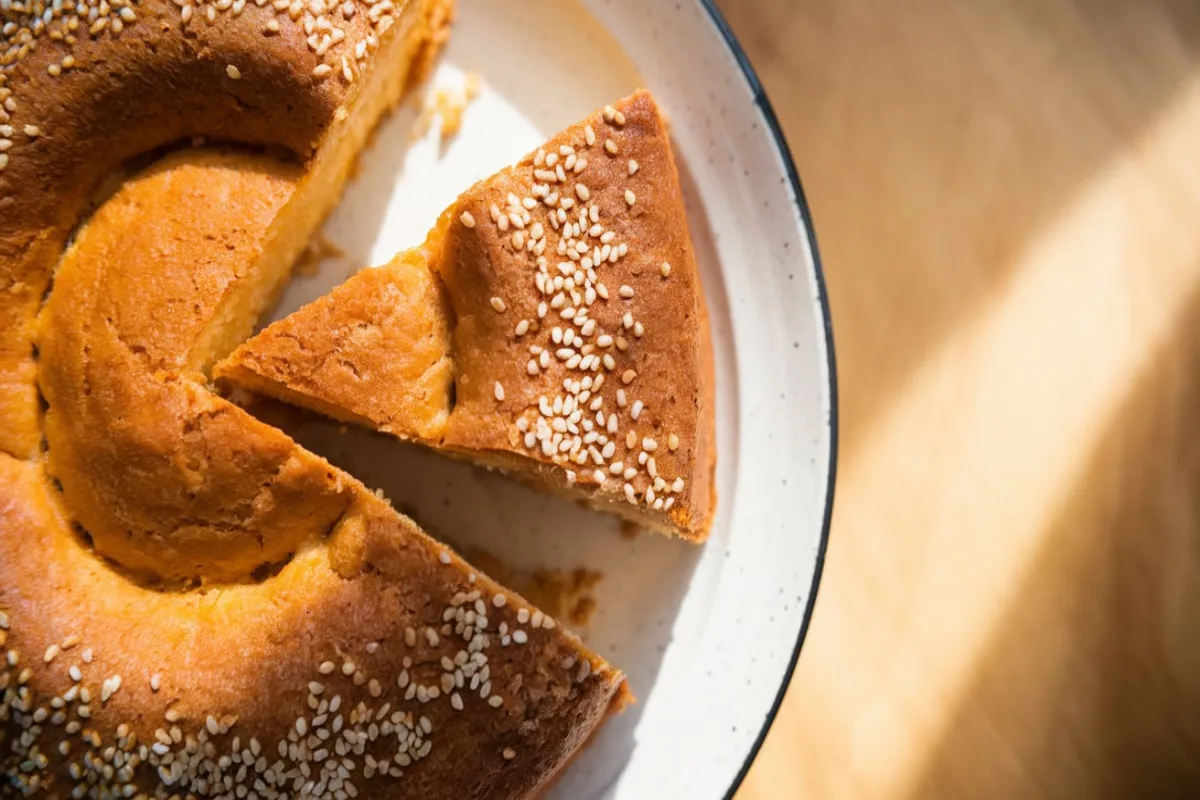Table of Contents
1. Introduction
2. The Origins of Quesadilla Salvadoreña
3. Cultural Importance of Quesadilla Salvadoreña
4. Ingredients Used in Quesadilla Salvadoreña
5. How to Make Quesadilla Salvadoreña at Home
6. Tips for Perfecting Your Quesadilla Salvadoreña
7. Nutritional Value and Health Benefits of Quesadilla Salvadoreña
8. Quesadilla Salvadoreña Variations Across the World
9. Pairing Quesadilla Salvadoreña with Beverages and Sides
10. FAQs
11. Conclusion: Celebrating Salvadoran Culinary Traditions
Introduction
If you’re a fan of trying new traditional desserts from different parts of the world, then Quesadilla Salvadoreña is a dish you cannot miss. This delectable sweet cheese bread has been a part of Salvadoran cuisine for generations, holding a special place in the hearts of those who enjoy baked goods. Contrary to what some may think, this Salvadoran treat is not related to the more commonly known Mexican quesadilla. Instead, Quesadilla Salvadoreña is a cake-like bread made with cheese, flour, and eggs, providing a rich and satisfying flavor.
Traditionally, Quesadilla Salvadoreña is served during breakfast or as a snack, paired with coffee or horchata, a rice-based drink. Its slightly sweet and cheesy flavor makes it perfect for any time of the day, and its texture, which is somewhat similar to a pound cake, ensures that it will satisfy any craving.
This guide will walk you through the history, ingredients, recipe, and much more about this delightful Salvadoran dish. Whether you’re planning to make it at home or simply curious about Salvadoran culture, this article covers everything you need to know about Quesadilla Salvadoreña.
The Origins of Quesadilla Salvadoreña
The origins of Quesadilla Salvadoreña are deeply rooted in the culinary traditions of El Salvador, a Central American country known for its rich and diverse food culture. El Salvador’s cuisine is heavily influenced by its indigenous heritage, mixed with Spanish culinary traditions brought during colonization.
While the exact history of Quesadilla Salvadoreña is not well-documented, it is widely believed that the dish emerged from local households in El Salvador where families used simple ingredients like flour, cheese, sugar, and eggs to bake a treat that could be shared for several days. The name “quesadilla” may have been inspired by the use of cheese, though the Salvadoran version is quite different from the Mexican tortilla-based quesadilla.
The recipe for Quesadilla Salvadoreña has evolved over time, with various regions of the country adding their own twists to the dish. In some areas, bakers might add cinnamon or vanilla for extra flavor, while others stick to the traditional recipe of cheese, flour, sugar, and eggs. Regardless of the variations, this dish has become a staple of Salvadoran cuisine, enjoyed by both locals and visitors alike.

Cultural Importance of Quesadilla Salvadoreña
Quesadilla Salvadoreña plays an essential role in Salvadoran culture. It is often served at family gatherings, holidays, and special occasions, symbolizing togetherness and warmth. Many Salvadoran families have their own recipes passed down through generations, with slight adjustments to the original ingredients to suit individual preferences.
In Salvadoran bakeries, quesadillas are commonly sold alongside other traditional baked goods, such as semita (a jam-filled pastry) and marquesote (a light sponge cake). The ubiquity of these items reflects their importance in Salvadoran everyday life, where fresh bread and pastries are an integral part of the daily diet.
Aside from being a beloved household treat, Quesadilla Salvadoreña has gained recognition beyond El Salvador’s borders, especially in areas with large Salvadoran communities, such as the United States. It’s not uncommon to find bakeries in cities like Los Angeles or Washington D.C. offering this delightful sweet cheese bread.
Ingredients Used in Quesadilla Salvadoreña
The ingredients for Quesadilla Salvadoreña are simple, yet they come together to create a rich and flavorful dessert. Here’s a breakdown of the essential components:
- Queso fresco or a similar mild cheese: This is the main ingredient that gives the quesadilla its unique flavor. Queso fresco is a soft, crumbly cheese commonly used in Salvadoran cooking. In regions where it’s hard to find, ricotta or cottage cheese can be used as substitutes, although the flavor profile will be slightly different.
- All-purpose flour: The foundation of the bread. Some variations may use rice flour for a lighter texture.
- Eggs: Essential for binding the ingredients together and giving the bread its cake-like consistency.
- Sugar: Adds sweetness to balance the saltiness of the cheese.
- Milk: Helps create a smooth and creamy batter.
- Baking powder: Ensures the bread rises properly.
- Sesame seeds: Sprinkled on top before baking, sesame seeds add a slight crunch and a nutty flavor.
The simplicity of these ingredients is part of what makes Quesadilla Salvadoreña so accessible to home bakers. With just a few items from your pantry, you can create this traditional dish and enjoy a taste of Salvadoran culture in your own home.
If you’re interested in experimenting with the dish, you can also find similar recipes and techniques for pairing it with other Salvadoran favorites, such as corn on the cob on a pellet grill.
How to Make Quesadilla Salvadoreña at Home
Making Quesadilla Salvadoreña at home is straightforward, even for beginner bakers. Below is a simple step-by-step guide:
- Preheat the oven: Set your oven to 350°F (175°C). Grease a baking pan with butter or oil to prevent sticking.
- Mix the dry ingredients: In a large bowl, combine 2 cups of all-purpose flour, 1 tablespoon of baking powder, and a pinch of salt. Whisk these ingredients together to ensure they are evenly distributed.
- Prepare the wet ingredients: In another bowl, beat 4 eggs, then add 1 cup of sugar, 1 cup of milk, and 1 cup of crumbled queso fresco. Mix until smooth.
- Combine the wet and dry ingredients: Slowly add the dry ingredients to the wet mixture, stirring continuously to avoid lumps. The batter should be smooth and thick.
- Pour the batter into the baking pan: Once mixed, pour the batter into the greased pan. If you like, sprinkle sesame seeds on top for a more traditional look and flavor.
- Bake: Place the pan in the preheated oven and bake for 35–40 minutes, or until the top is golden brown and a toothpick inserted into the center comes out clean.
- Cool and serve: Allow the quesadilla to cool for about 10 minutes before slicing. Serve with coffee or tea for a true Salvadoran experience.
This basic recipe can be modified to accommodate dietary preferences. For instance, you can use gluten-free flour for a gluten-free version or substitute dairy milk with almond or coconut milk if you’re lactose intolerant.
For more tips on how to ensure a perfect bake, especially for those who enjoy grilling alongside baking, check out how to grill corn without husk.
Tips for Perfecting Your Quesadilla Salvadoreña
To make the perfect Quesadilla Salvadoreña, there are a few key tips to keep in mind:
- Use room temperature ingredients: This will help the batter mix smoothly and evenly.
- Don’t overmix the batter: Overmixing can lead to a dense texture. Mix just until the ingredients are combined.
- Check the cheese consistency: If you’re using a substitute for queso fresco, ensure that it’s not too watery. A drier cheese will yield a better result.
- Add vanilla or cinnamon: Some versions of the recipe include vanilla extract or a dash of cinnamon for extra flavor. Feel free to experiment with these additions to suit your taste.

Nutritional Value and Health Benefits of Quesadilla Salvadoreña
Though it is a dessert, Quesadilla Salvadoreña offers several nutritional benefits, primarily due to its dairy and egg content. Here’s a breakdown of the key nutritional aspects:
- Protein: The combination of eggs and cheese gives each slice a healthy amount of protein.
- Calcium: Thanks to the cheese and milk, Quesadilla Salvadoreña is a good source of calcium, which is essential for strong bones and teeth.
- Energy: With its carbohydrates and fats, this dessert provides a good source of energy, making it a great choice for breakfast or an afternoon snack.
- Vitamins and minerals: The eggs provide essential vitamins like B12 and riboflavin, while the milk and cheese contribute vitamins D and A.
While it’s still a sweet treat, the balance of ingredients makes Quesadilla Salvadoreña a relatively nutritious option, especially when compared to more sugary, processed desserts.
Quesadilla Salvadoreña Variations Across the World
Although Quesadilla Salvadoreña is a Salvadoran specialty, similar variations of this sweet cheese bread exist in other Latin American countries. In Honduras, for example, the dish is also popular, though there may be slight differences in the types of cheese or spices used.
Beyond Central America, the popularity of Quesadilla Salvadoreña has spread to countries with large Salvadoran immigrant populations. In the United States, it’s not uncommon to find bakeries offering their own take on the dish, sometimes incorporating local ingredients or modern twists like gluten-free versions.
For those looking to adapt the recipe to fit their dietary needs, here are a few modifications:
- Gluten-free: Use almond or rice flour instead of all-purpose flour for a gluten-free version.
- Vegan: Substitute the cheese with a vegan alternative like cashew cheese and replace eggs with a flaxseed mixture (1 tablespoon ground flaxseed mixed with 3 tablespoons water).
- Sugar-free: Opt for a sugar substitute like stevia or monk fruit sweetener to reduce the sugar content without sacrificing flavor.
Pairing Quesadilla Salvadoreña with Beverages and Sides
Traditionally, Quesadilla Salvadoreña is served with a hot cup of Salvadoran coffee or horchata, a creamy, rice-based drink flavored with cinnamon. The mild sweetness of the quesadilla pairs perfectly with the richness of the coffee or the spiced flavors of horchata.
However, there are other beverage options you might consider:
- Herbal teas like chamomile or peppermint can be a great pairing, offering a light and refreshing contrast to the richness of the quesadilla.
- Café de olla, a traditional Mexican spiced coffee, is another fantastic option, especially for those who like a bold flavor.
- Milk or plant-based milk alternatives also pair well, balancing out the flavors for a more neutral taste.
In addition to beverages, you might also serve Quesadilla Salvadoreña with a light fruit salad or yogurt for a refreshing contrast to the sweet and cheesy bread.
For those interested in savory pairings, consider learning how to make simple, versatile meals like a grilled chicken wrap to complement your quesadilla. You can find a great recipe for it here.
FAQs
1. How long does it take to bake Quesadilla Salvadoreña?
The baking time typically ranges from 35–40 minutes, depending on your oven. Always check for doneness by inserting a toothpick into the center of the bread; if it comes out clean, it’s ready!
2. Can I freeze Quesadilla Salvadoreña?
Yes! You can freeze Quesadilla Salvadoreña for up to two months. Just make sure to wrap it tightly in plastic wrap or store it in an airtight container to preserve its freshness.
3. What’s the best way to store leftovers?
If you have leftover quesadilla, store it in an airtight container at room temperature for up to three days. For longer storage, refrigerate it.
4. Can I make Quesadilla Salvadoreña without cheese?
While the cheese is a key ingredient, you can make a version without it. Vegan cheese substitutes, such as those made from nuts, can provide a similar texture and flavor.
5. Is Quesadilla Salvadoreña similar to Mexican quesadilla?
No, Quesadilla Salvadoreña is very different from the Mexican quesadilla. The Salvadoran version is a sweet cheese bread, while the Mexican quesadilla is a tortilla filled with melted cheese and often other ingredients like meat or vegetables.
Conclusion: Celebrating Salvadoran Culinary Traditions
Quesadilla Salvadoreña is more than just a delicious dessert—it’s a symbol of Salvadoran culture and family traditions. Whether you’re making it for a special occasion or as a simple treat to enjoy with your morning coffee, this sweet cheese bread offers a unique and comforting flavor that will transport you to the heart of El Salvador.
By trying this recipe, you not only get to enjoy a delightful dish, but you also connect with a piece of Salvadoran heritage. And the best part? It’s easy to make at home, with ingredients you likely already have in your pantry. So why not give it a try and bring a taste of Salvadoran cuisine into your kitchen?

